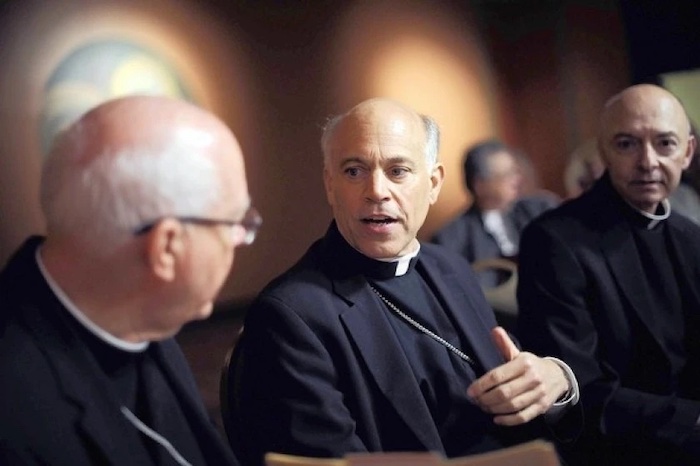— Catholic women call for wide-ranging church reforms in new international survey

By Kathleen McPhillips and Tracy McEwan
Catholic women across the world are calling for a wide range of reforms to the church, according to the results of our survey of more than 17,000 Catholic women from over 100 countries published this month.
A substantial majority were concerned about the prevalence of abuse, racism, and sexism in church contexts, and many raised issues relating to transparency and accountability in church leadership and governance.
The International Survey of Catholic Women is one of the most extensive surveys of Catholic women ever undertaken, and its findings should inform lasting and genuine change in the Catholic Church.
Why we did this survey
The survey was initiated by Catholic Women Speak in response to the invitation of Pope Francis for the Catholic Church to engage in a process of “synodality” for the 2021-2023 Synod of Bishops. The Synod will examine how the church comes together and is considered to be of great importance to major issues facing the church.
The aim of the survey was to gather feedback on the experiences of Catholic women. It provides insights into the complex realities of Catholic women’s lives, the ways in which they express their faith, and their relationships with the institutional church. We devised and managed the survey along with Professor Tina Beattie from the University of Roehampton, London.
The large number of responses clearly indicates a desire by Catholic women to share their aspirations and frustrations, and to make their views on the situation of women in the Catholic Church known to the Synod.
Respondents identified themselves as women from all walks of life – single, married, divorced, LGBTIQ, and religious. While the findings cannot claim to be representative of all Catholic women, they articulate the diverse hopes and struggles of women in the worldwide church.
The views of Catholic women reflect the cultural and communal contexts within which their faith is experienced and practised. This diversity is rarely represented in church documents or theology, and many women struggle to see the relevance of church teachings to the complex realities of their lives.
Many women ‘conflicted’ with the Catholic Church
The survey found that even when women have considerable struggles with Catholic institutions, nearly 90% said their Catholic identity is important to them. Many continue to practise their faith despite ongoing difficulties with the institutional church.
Several respondents used words like “frustrated”, “hurt”, “angry”, and “conflicted” when describing their relationship with the church.
Most respondents said they would welcome reform in the Catholic Church, especially – but not exclusively – regarding the role and representation of women.
One woman from Australia observed “we walk the line of being valuable members of society but voiceless in many elements of the church”. Another, from Nicaragua said, “stop making women invisible”.
Respondents raised issues related to:
A minority of respondents expressed a preference for church reform based on a pre-Vatican II model of authority, priesthood, and liturgy. Vatican II was an important meeting of all Catholic bishops held in Rome between 1962-1965 who made progressive decisions about the future of the worldwide church.
Abuse remains a central problem
Respondents consistently identified the sexual, physical, and emotional abuse of women, children, and other vulnerable people as a central problem for the church.
Some respondents disclosed experiences of abuse and harassment, while others expressed disappointment at the lack of effective action to address the crisis of sexual abuse.
One woman from Canada wrote:
they have a long way to go in dealing with the scandal and cover up. I know this firsthand. I feel as betrayed by the institutional betrayal as I do by my abuser […] This is coming from a committed lifelong Catholic who has never left the church.
Many respondents were deeply concerned about transparency and accountability in church leadership and governance. There was agreement that a less hierarchical and authoritarian model of the church was urgently needed, with greater collaboration and sharing of authority between clergy and laity (lay people).
A substantial majority of respondents identified clericalism as having a negative impact on church life. Clericalism is the idealisation of male clerics and subsequent abuses of power.
A respondent from Panama remarked, “I wish that women had more voice and that we were not abused by clericalism that excludes us and takes away our dignity”.
Most respondents linked their Catholic identity with social justice, and wanted church leaders to address poverty and marginalisation. Several raised the issue of economic justice in church affairs, including the lack of adequate pay for female church workers, both lay and religious.
The challenge for the Synod is to demonstrate that the many concerns raised by respondents in the survey are carefully listened to and addressed.
Complete Article ↪HERE↩!



